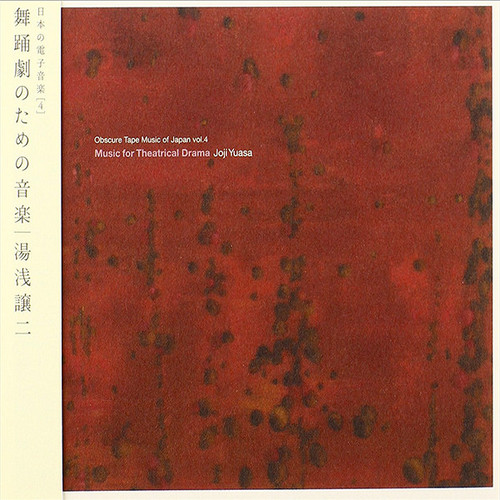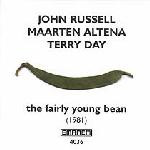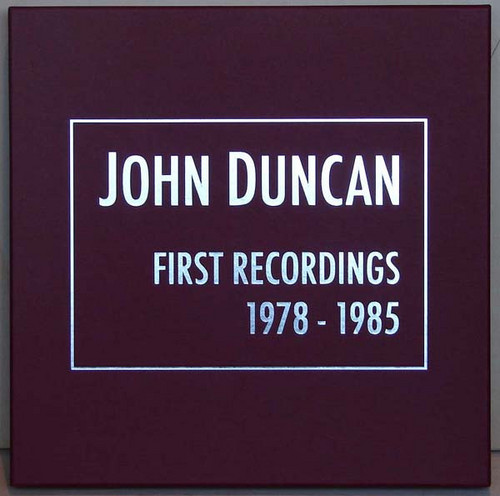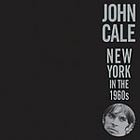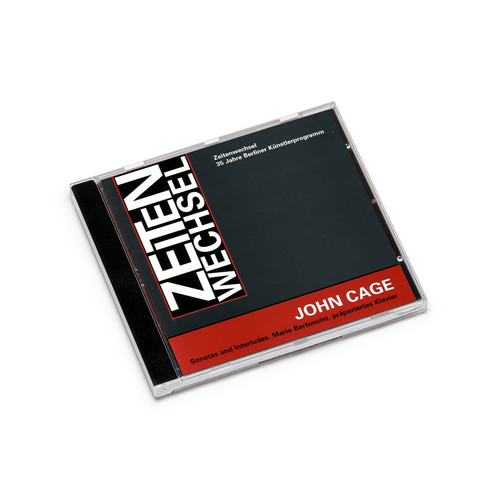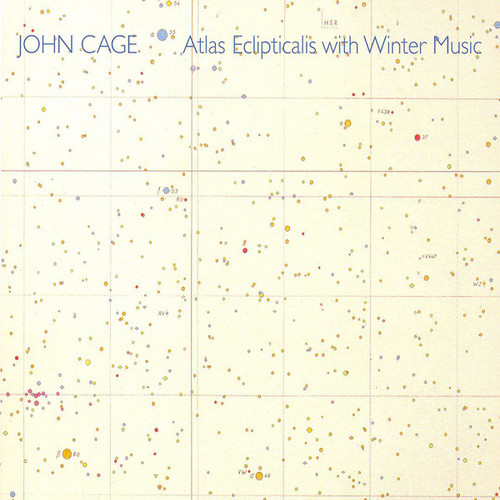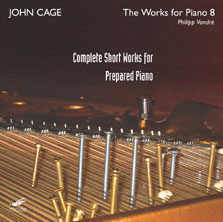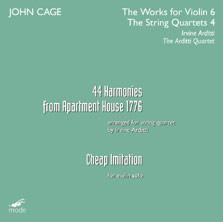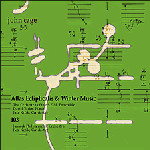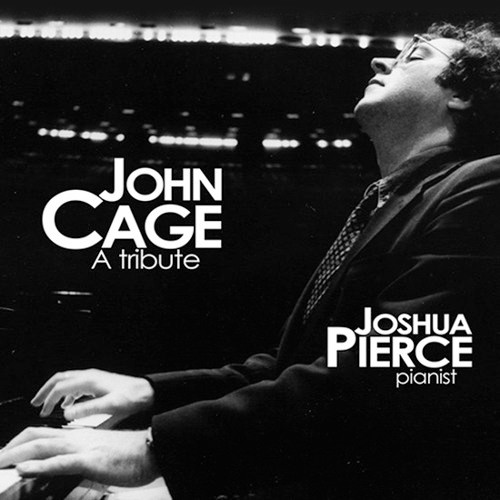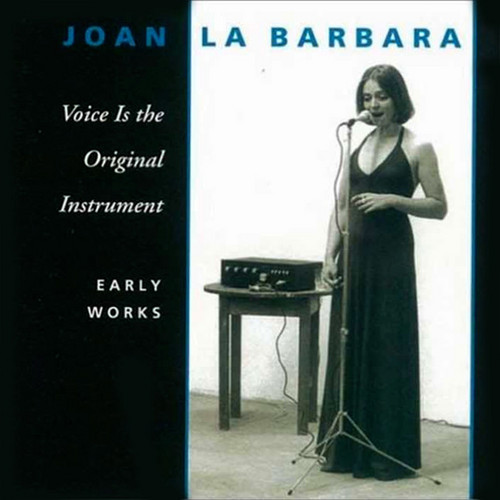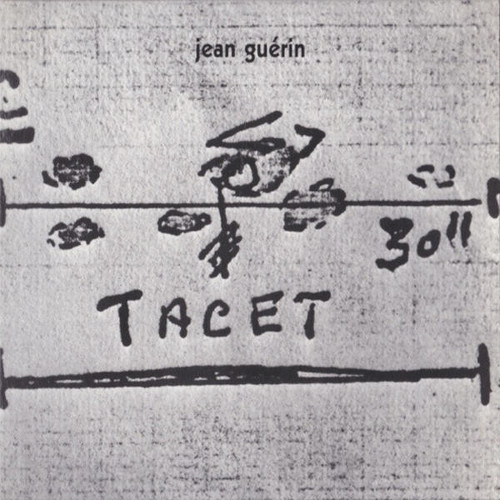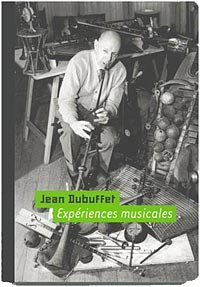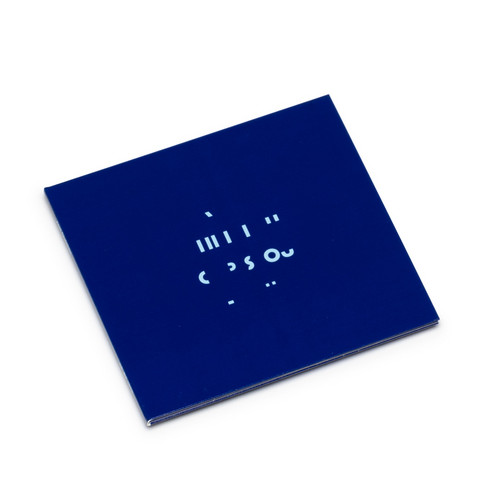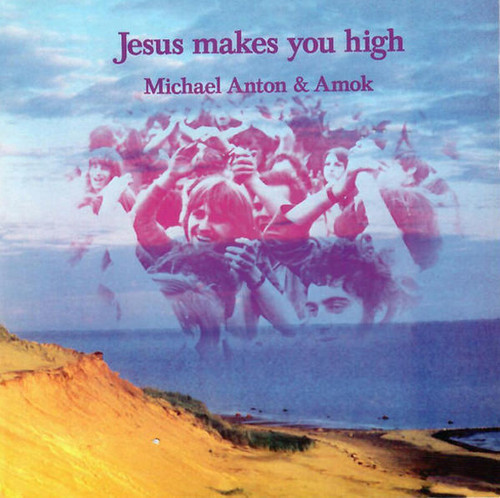Reissues
Music for theatrical drama. Obscure Tape Music Of Japan – Vol.4
This is volume 4 of Omega Point's newly-reissued Obscure Tape Music of Japan series, featuring two early works of music concrète composed for theatrical drama by legendary Japanese composer Joji Yuasa. The sounds on this recording, especially of "Oen" is so experimental and strange, but this music was not for avant-garde theater. "Mittsu No Sekai" contains elements of a mechanical beat (suggestive of a machine civilization) that could be the precursor to industrial music. Composed for the …
Aoi no Ue. Obscure Tape Music of Japan vol. 1
Volume one of Omega Point's Obscure Tape Music of Japan series, featuring Joji Yuasa's "Aoi-no-Ue" (1961) and "My Blue Sky" (1975). Joji Yuasa (b. 1929) is one of most important composers in Japan after World War II. "Aoi-no-Ue" was composed for experimental theater at Sogetsu Art Center. The sound of this work is made from the chants of Japanese traditional "Noh" theater. "The text is recomposed by me keeping the original words. And it was sung in the style of Noh-chant by three brothers ... Th…
The fairly young bean
Acoustic guitar, cello or double bass, & percussion trio improvisations -- intended for release as the third CAW LP which never happened. Recorded 3/24/81.
Early recordings 1978-1985
This is the limited friends edition of 33 numbered copies in a red Box Set with silver or golden imprints instead of the black Box Set with black imprints, especially for the artist and a few other people in relation to VOD - a gorgeous box covering john duncan’s early sound/film work - of the vod releases in the last year, this is the nicest on a presentation-scale (the included medias are of course lovely as well.)
New York in the 1960s
These recordings are solo efforts on electronic organ - the awesome Vox Continental, guitar and viola as well as collaborations with saxophone player Terry Jennings, violinist Tony Conrad, Velvet Underground guitar player Sterling Morrison and the VU's original drummer Angus MacLise. Thanks to Tony Conrad, who was a co-member in La Monte Young's group The Dream Syndicate, these tapes are finally available to the public.
The Piano Works 7 - Chess Serenade
A major discovery and first recording of an important Cage piece from 1944. In 1944, John Cage was invited to participate in “The Imagery of Chess” exhibition at the Julien Levy Gallery in New York City. The artists included Calder, Noguchi, Motherwell, Breton, Duchamp, Ernst, Man Ray, Tanning and other leading surrealists.Cage contributed a painting entitled “Chess Pieces”. It was purchased at the show and went into a private collection. For decades it was deemed lost and was (almost) forgotten…
Sonatas and Interludes
This landmark recording of John Cage’s prepared piano works performed by Mario Bertoncini was recorded back in December 1991. The sonatas are divided into four groups, each divided by the less overtly structured, rhapsodic interlude pieces. Bertoncini sensitivity to the displaced sonic characteristics of the piano is remarkable and suggests a rigorous dedication to Cage’s work.
Atlas Eclipticalis With Winter Music
Originally released as a 4LP set back in the early days of Mode Records, the first two discs of this 3CD set document the two live performances of John Cage's 1961 orchestral work Atlas Eclipticalis played simultaneously with 1957's Winter Music (in a version for three pianos) recorded at Seattle's Cornish Institute on December 11th 1983. Disc three presents what the label rather grandly describes as an "all-star" recording of all 86 instrumental parts of Atlas Eclipticalis, (the first of its ki…
Complete Short Works for Prepared Piano
The complete short prepared piano works collected on 2-CDs. John Cage's works for prepared piano expose his earliest experimentations in finding new and exotic sounds.Brief and attractive, they are among his most accessible work. This release marks the first time all of his short works for prepared piano have been made available in one set. All the prepared piano works are included aside from the magnum opus, Sonatas and Interludes. Pianist Philipp Vandr´e has recorded Sonatas and Interludes for…
44 Harmonies from Apartment House 1776
Cage's "44 Harmonies" were originally written to form part of the sprawling bicentennial commission "Apartment House 1776", and take as their starting point late 18th century anthems and hymn tunes by William Billings, Jacob French, Andrew Law, James Lyon and the wonderfully-named Supply Belcher. Cage's compositional - or rather decompositional - method was to remove certain tones and extend others, and as James Pritchett points out in the (excellent as always for Mode) liners, he was delighted …
Atlas eclipticalis / 103
Two live, unedited performances of Cage's orchestral music: "At last Eclipticalis With Winter Music" (recorded 5/19/93, performed by The Orchestra of the SEM Ensemble, conducted by Petr Kotick, piano by David Tudor) and "103" (recorded 11/21/98, performed by the Janacek Philharmonic Orchestra, conducted by Petr Kotik)." Kotik and Cage met for the first time in May, 1964, performing a 3-hour, six percussion version of Atlas Eclipticalis. Kotik's association with Cage continued until the composer'…
A tribute
From the liner notes of Eric Salzman: “John Cage wrote for keyboards throughout most of his life. Most famously, he invented the so-called "prepared piano" but he also wrote for unprepared piano in both traditional and untraditional ways. His later piano works employ an almost ferocious complication and virtuosity at the outer limits of performer possibility. Earlier he used electronic extensions, chance and performer collaboration in complex ways. His early keyboard music was written for himsel…
Voice is the original instrument
Collection of Joan La Barbara early works and her first vocal compositions, originally released on LPs in the 1970s and early 1980s on her own Wizard Records. "One of my earliest pieces, "Hear What I Feel", was a self-exploratory, sensory-deprivation experimental work, designed to help me discover new sounds, delve into psychological aspects, as well as communicate with the audience on a pre-verbal level of awareness. After spending an hour in isolation with my eyes taped shut and not touching a…
Mizu no nai umi
Music recorded in 1990. forgotten about and rediscovered in a box in 2003. live version recorded in 2003 at Roulette, NYC with the addition of Tim Barnes on crotales and Karen Waltuch on Viola. In 2003 i discovered a box of tapes I had thought I had erased, and had long forgot about. the tapes were all from between 1986-1991 , and as i listened back to them, I could clearly hear why i didn't like them at that time. But, youthful obsessions can sometimes be like tying your shoelaces together. Fo…
Tacet
Last copies araound, long deleted..."One of the best-kept secrets in the very wonderful Futura Records catalogue of the late 60's/early 70's (remember Red Noise, Horde Catalytique Pour La Fin, Jacques Berrocal, Semool, Chêne Noir, Mahogany Brain and the others?), this album even missed attaining the cult obscurity status of some of those mentioned, remaining basically unheard because of the difficulty of even getting aware of its existence, not to mention the quasi-impossibility of tracing a cop…
Expériences musicales
32pp book in French, lavishly illustrated. Born in 1901 Jean Dubuffet studied painting, gave it up to become a wine merchant. Then in 1943 he became a full time artist, working in various media, including what we would now call installations, in a style often referred to as Art Brut ( now associated with the art of children, the mentally ill, or naifs) - a term coined by Dubuffet himself, though not to describe his own work but that of outsiders who had no stake in the artworld, and who eschewed…
Jani Christou (Enantiodromie / Praxis / Epicycle / Anaparastasis)
An expanded version of the previous rz LP by Jani Christou. All works by Christou, the late, legendary "freely-atonal" Greek composer. Features: "Enantiodromia" (1965-68, for orchestra); "Praxis" (1966-69, for string orchestra and piano), "Epicycle" (1968, for instruments, actors and voices); "Anaparastasis III" (1968-69, for soloist, ensemble and continuum [tapes]); "Mysterion" (1965-66, for narrator, actors, 3 choirs, orchestra and tapes)"Jani Christou tried to use and incorporate philosophica…
A Catalogue of Sounds
Jakob Ullmann's music realizes an infinite variety of gradations in all areas of musical formation. That the music of the "catalogue" is nearly always played very softly leads to the ear noticing the smallest differentiations; the listener is put into a state of constant, acute attentiveness. The musical stream is constantly subjected to small irritations, sometimes its flow quickens, sometimes there are brief splashes like those caused by pebbles thrown into water. Performers: Ensemble Oriol Be…
Jesus Makes You High
A very strange 'paycheck' project for Conny Plank and Achim Reichel's Gorilla Musik production company. Wonderland-esque German rock with heavy Christian lyrics! A.R. is nowhere to be seen on the sleevenotes, but his fingerabdrücke are everywhere. You can make up your own punchline for the album title. First-ever reissue includes full lyrics and two bonus tracks from their only 7" release
Eloge de la betise ou les peripeties des Ubu
Funambulesqueries en 14 séquences adapted from Alfred Jarry's Ubu Roi, for voices, saxophones and tape. Jacques Lejeune studied music at the Schola Cantorum and the Paris Conservatory with Daniel-Lesur and Pierre Schaeffer before working with François Bayle at the Groupe de Recherches Musicales. He entered the GRM in 1968, taking charge of the “music cell for images”, where he completed various projects for stage and television. It was at his insistence that in 1978 the Ateliers de la Musique Él…
